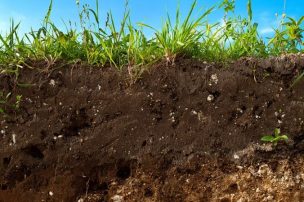
So, What is Soil and Why is it Useful? Get Dirty with the Basics
Soil is a major component of the ecosystem for many different reasons, but let’s start with the basics. What is it?
Soil is a mixture of microorganisms, decaying organic matter, minerals, water, air, earthworms, and other insects. It is not dirt, which is just dead soil. It is excellent for the environment. Not only can it effectively remove impurities, it also kills disease agents, degrades contaminants, and modifies the atmosphere by emitting and absorbing gases, like carbon dioxide, methane, water vapor, and dust. It also provides a habitat for certain animals and organisms – think of all the insects you see when you’re getting dirty in your garden! It absorbs, holds, releases, alters, and purifies most of the water in terrestrial systems, providing added benefits to the ecosystem. Also, it processes recycled nutrients, giving back to the land.
Although it looks like one stagnant mass, soil contains many layers, or horizons. Often, these horizons are recognized by the letters O, A, E, B, C, and R, which defines them from top to bottom. Remember, not all soil will have all horizons – the structure will vary depending on location, human interference, and ploughing frequency. Let’s go through each major horizon:
O: Organic matter
This horizon mainly consists of decomposing leaves and similar materials. It can be thick, thin, or not present depending on the soil area.
A: Topsoil
This consists of minerals from parent material with some organic matter incorporated. It is a good horizon for plants and organisms to thrive in.
E: Eluviated
This horizon is leached of clay, minerals, and organic matter, leaving us with sand, silt particles, and other resistant materials.
B: Subsoil
This area is rich in minerals that have moved down from the A or E horizons and have since accumulated.
C: Parent material
This horizon is the deposit at the earth’s surface where the soil develops.
R: Bedrock
The final horizon is a mass of rock (for example, granite or limestone) that rests beneath the parent material. It can also help form the parent material in some soils if the bedrock is close enough to the surface.
Remember, not all soil is the same! Many different factors affect it: climate, organisms, landscape, parent material, and time. These factors vary throughout the world. Physical, chemical, and biological processes can also affect it, like weathering and erosion. To test this, do some digging in your garden, and then check out a friend’s. How are the two soils different? What colors do you see? What consistencies?
Soil color is influenced primarily by minerals present. Find out your mineral count by taking a look (this is also helpful when choosing a fertilizer!) Soils that are high in iron can be deep orange-brown to yellowish brown. Soils that have an abundance of organic matter are dark brown or black.
Good soil structure is loose, crumbly, and has organisms embedded in it. Poor soil, on the other hand, is compacted and lacks organic matter/soil organisms. Also remember that there are three categorizes soil particles can be categorized into: sand, silt, and clay. Most soils have a combination of all three, so you’ll probably see each particle type when you analyze. For scale, sand particles measure 2.0 to 0.05 mm, silt 0.05 to 0.002, and clay less than 0.002 mm.
Soil is the foundation of the natural world and shapes the landscape around us. It creates diversity in many different ways. To make the most of your soil, it’s essential to understand it down to its very core. That way, you’ll know what it needs to thrive!


Sorry, the comment form is closed at this time.